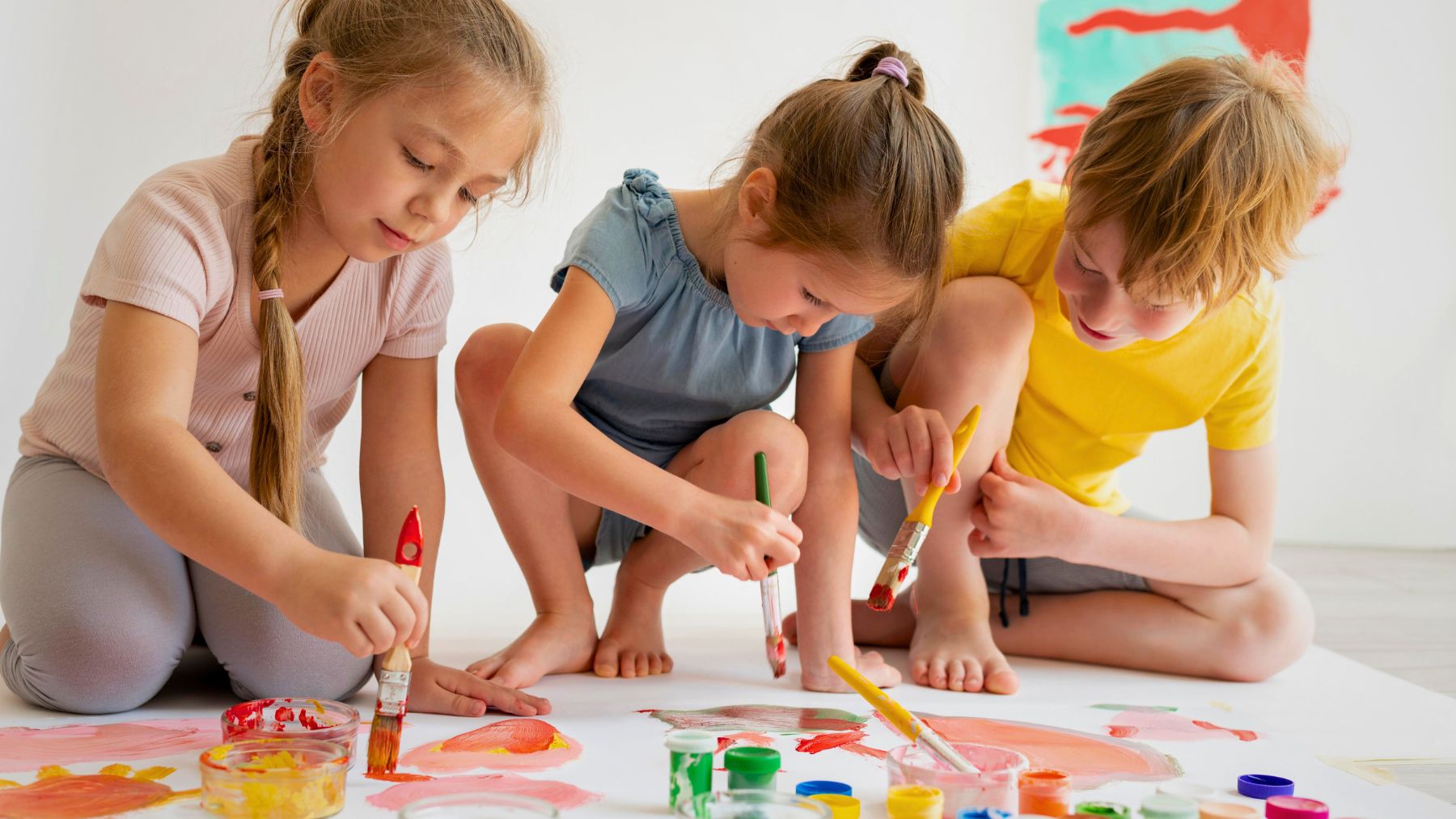Intelligence is often associated with reading or math levels, but research shows that artistic expression can nurture young minds and lay the groundwork for lifelong learning. This subject is rooted in creative expression—an activity that goes beyond strict rules and encourages children to explore, experiment, and get delightfully messy.
Here, we’ll focus on how art—drawing, painting, sculpting, and even mixed media projects—not only brings joy but also enhances cognitive development in children, from fine motor coordination and problem-solving to emotional expression and resilience. By integrating art with other imaginative practices, such as storytelling, music, or dance, children engage multiple areas of the brain simultaneously.
Art, a subject that promotes learning and development in kids
Experts in child development, such as Dr Laura Markham from Columbia University, highlight that any kind of art is great for kids because it develops expressiveness. Through art, children can process complex emotions and experiences for which they may not yet have the vocabulary. In this way, it serves as a safe, nonverbal outlet that validates feelings and bolsters emotional intelligence.
Engaging in artistic activities also stimulates cognitive processes. The challenge of molding clay, blending colors to achieve the perfect tone, or translating abstract thoughts onto paper involves constant problem-solving and decision-making, which are essential for building new neural pathways.
In addition, creating art fosters concentration and persistence. As they mature, they may experience frustration when their artwork doesn’t meet their expectations. Overcoming that frustration, practicing repeatedly, and finding satisfaction in the process teach patience, resilience, and the importance of perseverance in tackling challenging tasks.
Bringing art into everyday moments
Incorporating art consistently into daily life encourages creativity, critical thinking, and emotional expression. Here is how:
- Keep supplies handy and accessible: Items such as paper, crayons, washable markers, clay, or even repurposed resources like old magazines for collages ensure that creative opportunities arise spontaneously. A small, designated art corner in the home can foster continuous, unplanned exploration.
- Focus on the process, not on perfection: Shift the emphasis from achieving realistic depictions to exploring the richness of colors, textures, and shapes. Rather than asking “What is it?”, encourage them with “Tell me about what you made”. This approach minimizes performance pressure while nurturing the joy of discovery.
- Join in sometimes (casually): Occasionally sitting down to doodle alongside your child demonstrates that their pursuits are valued and can strengthen your bond.
- Connect art to stories and play: Encourage your child to blend art with other interests by drawing a favorite story character or designing scenery for their toys. This enriches their narrative skills while stimulating broader cognitive processes that include symbolic thinking and problem solving.
- Celebrate the effort, display work: Recognize and celebrate the creative process by displaying your child’s work, even if only temporarily. Hanging up drawings or projects reinforces their effort, boosts self-esteem, and cultivates an appreciation for expression.
By incorporating art into everyday moments, you provide children with a powerful, enjoyable tool for developing their minds. These practices help ensure that creativity and intelligence bloom together in an inspiring environment.
